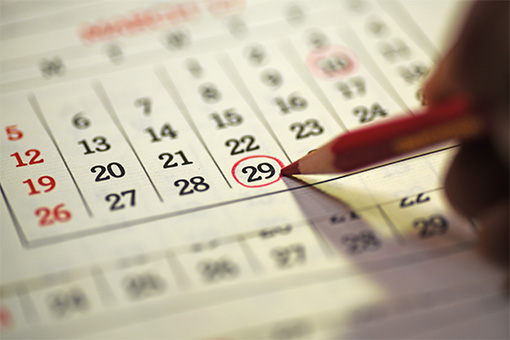What are SMART Goals?
by Colin Butler
Vertex Education Ambassador – Fitness
“Where do I start my fitness journey” and “How can I stay consistent?” are some of the most common questions asked by fitness beginners. Getting started can feel overwhelming and even cause some beginners to give up before they’ve even begun. So, how can we make getting started easier? We are going to keep it simple and go back to some business basics in setting goals.
SMART is an acronym and strategy used in business that means Specific, Measurable, Attainable, Relevant, and there? How do you know when to stop driving?
Having a plan in place will help you answer all of these questions and let you focus on enjoying the drive instead and stressing out about what you’re doing.

What are SMART goals?
Let’s start with a simple idea that I hear from my clients regularly. “ I want to get healthier”. While this may be a great goal to have, it lacks clarity and doesn’t really give us a sense of direction or how to get there.
Let’s build a goal using SMART together so you can develop personal goals and strategies on your own.
Specific
In order for a goal to be specific, it needs to be well-defined, clear, and unambiguous. “I want to get healthier” doesn’t give us a specific goal. What do you consider to be healthier? This answer can, and will be, different for everyone.
“I want to walk more” is a little clearer in what you want to do, but you’re still not quite there.
“I want to average walking 10,000 steps a day.” Perfect! That goal is specific and what’s needed because it’s clear-cut and well-defined. It tells you exactly what you want to do, and there’s no ambiguity in what your goal is.
S – I want to average 10,000 steps a day.
Measurable
Next, you need to determine what you can use to measure your goal. Otherwise, how will you know to give yourself a high five if you can’t track your progress?
How do you track that? The easiest way for this particular goal is to have a pedometer either on your wrist or on your phone to track how many steps you’re making. As long as you’re consistent with using it, this is a great way to tell if you’re hitting your daily step goal.
S – You want to get to 10,000 steps a day.
M – You’ll be tracking your steps with a pedometer.
Attainable
If you’re new to fitness, it’s not advisable to plan to run a marathon in a month. Setting goals that are achievable will help make sure you have the proper motivation to reach them and set yourself up for success. Setting goals too high, too fast is a quick and easy way to get frustrated and give up.
While your goal may be to get 10,000 steps every day, if you currently get around 3,000 steps every day, it wouldn’t be attainable to go straight for 10,000 steps. That is a big jump initially, and it’ll benefit you to start small and work up to 10,000 with a measurable timeline, so let’s say we will increase our step count by 2,000 every few weeks.
S – You want to get to 10,000 steps a day.
M – You’ll be tracking your steps with a pedometer.
A – Increase step count 2,000 steps a day every few weeks until you reach 10,000 a day.

Relevant
Now is a great opportunity to take a look at the bigger picture of your goals. You said earlier that you wanted to get healthier, but does the goal of increasing the number of steps per day help you get to that goal? In this case, it does and that makes the goal relevant to the overall plan. However, if your goal was to go to the gym more often, then increasing your daily step count wouldn’t be relevant.
Is it relevant to your life? Can you plausibly find time and space to walk 10,000 steps a day? Can you do it consistently? And even, do you like it? If you set goals for yourself but you hate them or they do not fit into your life and schedule, you won’t be as consistent and will struggle to meet your goals. If you find it’s not working out the way you want, or it’s not fitting into your daily life how you want, change your goal.
Remember, there’s no one and nothing telling you that you have to stick to a plan that you don’t like or ultimately doesn’t help the way you thought it would. I tell my clients all the time – sometimes doing what you like and what works for you is the best thing you can do because it’s the best way to keep yourself consistent. Don’t try to force a goal that isn’t working for you or makes you hate the goal.
S – You want to get to 10,000 steps a day.
M – You’ll be tracking your steps with a pedometer.
A – Increase step count 2,000 steps a day every few weeks until you reach 10,000 a day.
R – I can fit 10,000 steps into my everyday life and be mostly consistent.
Time-Bound
A time-bound goal means setting up a deadline by which you plan to meet your goal. Setting a deadline to your goal means you’ll be able to plan the incremental changes you need to make the goal as easy as possible.
Let’s finish up the SMART goal with the last part. Looking at your goal so far: You want to average 10,000 steps a day, you’ll track using a pedometer, you’re going to increase your steps by 2,000 a day every few weeks until you get to 10,000, walking is exactly what you should do to increase your step count, and you want to achieve your goal in 8 weeks, let’s say. This is what your goal would be using the SMART acronym.

SMART Goals
S – You want to get to 10,000 steps a day.
M – You’ll be tracking your steps with a pedometer.
A – Increase step count 2,000 steps a day every few weeks until you reach 10,000 a day.
R – I can fit 10,000 steps into my everyday life and be mostly consistent.
T – You want to achieve your goal in the next 8 weeks.
These goals clearly tell you what your end goal is, how you’re going to determine if you met your goal, the steps to take to meet your goal, making sure the plan will help you reach your goal, and an end time to reach your goal.
In the case of our goal to achieve 10,000 steps a day, you can combine how you measure your goal with the timeline help you feel less overwhelmed by making a bigger change, can be a great way to maintain motivation, and help you ensure you’re on the right path.
We already did this by saying we are going to add 2,000 steps every few weeks. Set up checkpoints to make sure you are actually increasing your steps and to check in on whether or not you are able to be consistent with the goal.
Give Yourself Some Grace
One of the main advantages of SMART goals is that they help you carefully think through what you’ll need to reach your goals. A lot of times we (myself included) start thinking about where we want to be, but in the process of achieving our goals, get distracted from the path and eventually never achieve what we want. In other cases, life gets in the way, and we have to pause working towards our goals and we don’t always pick it back up again until much later.
For example, maybe you get sick for a week and can’t walk every day like your plan calls for. Oftentimes the pressure to get back on track starts creating unneeded stress in your life. This pressure can take away from any enjoyment you may get from working towards your goal, and if you don’t enjoy the journey you may end up becoming unhappy and leave your goal before you can achieve it. So give yourself some grace! In this case, if you’re out for a week, extend your goal by one week and start back up. Don’t try to make up for two weeks in one week. Or if you are out even longer, pick up the pedometer when you can, see where your daily steps are, and start from there!
In the grand scheme of things, adding some time and enjoying the journey towards your goals is much more important than meeting a deadline or giving up because you feel like you failed. Give yourself some grace, reevaluate, and keep on swimming.

